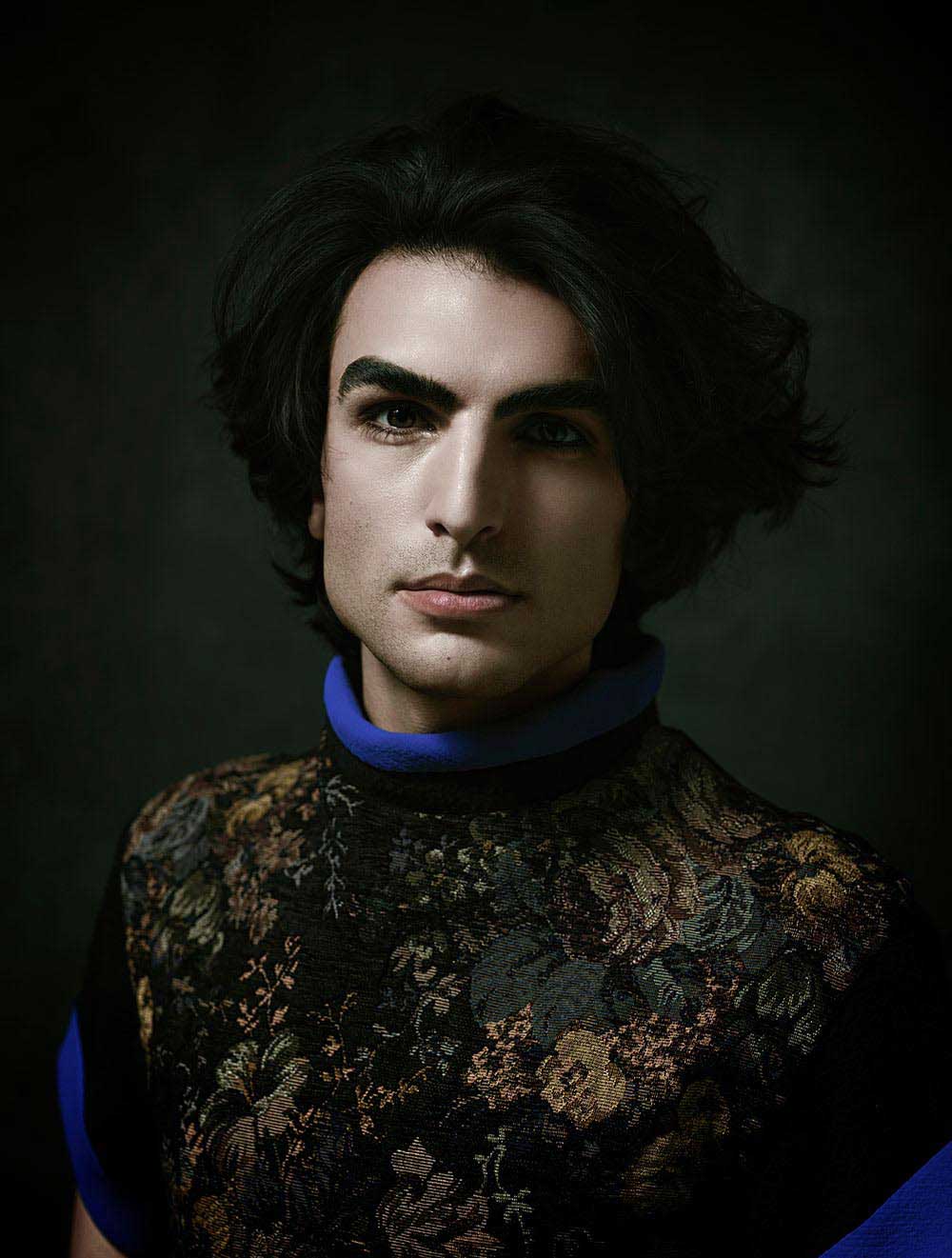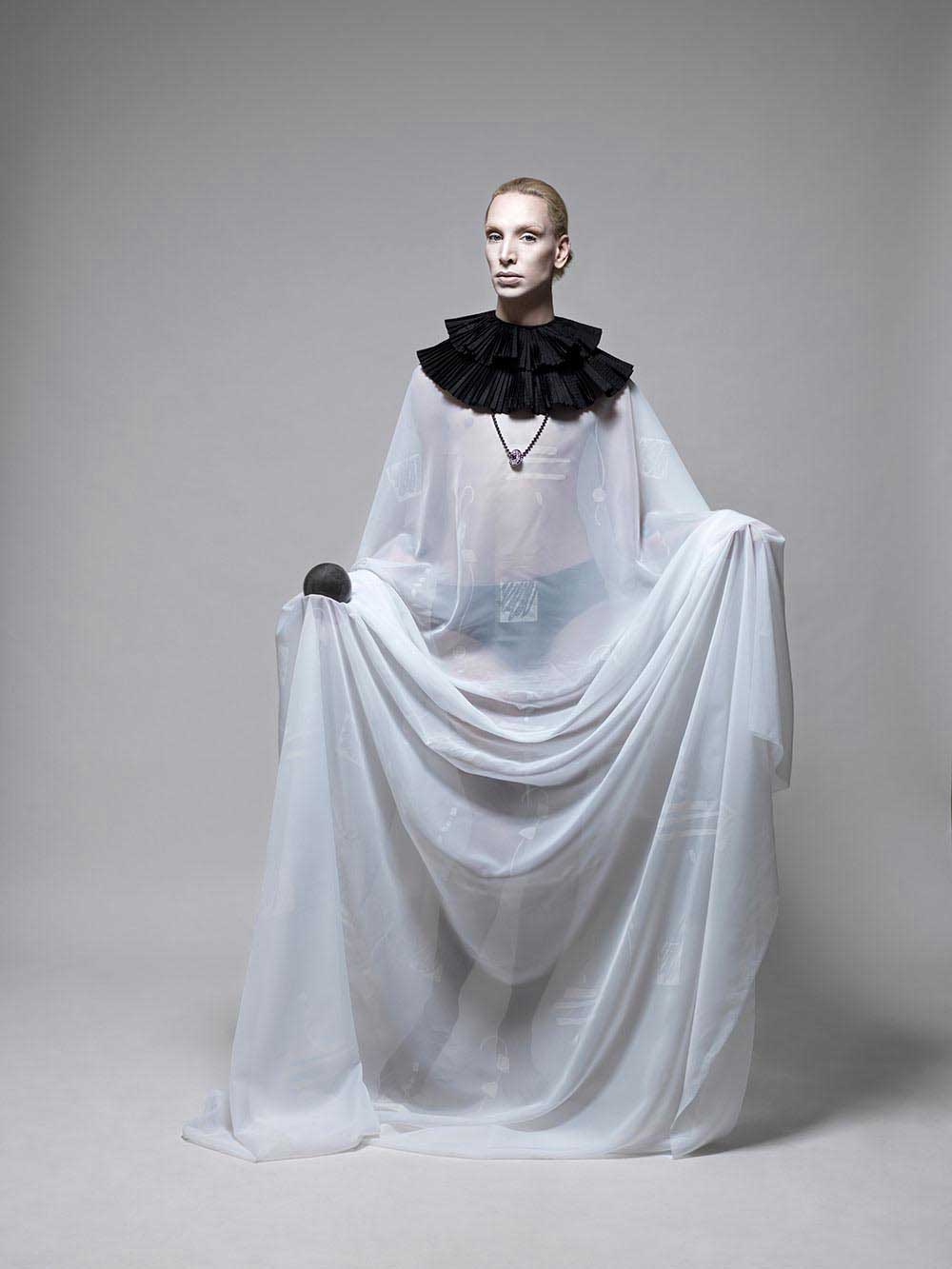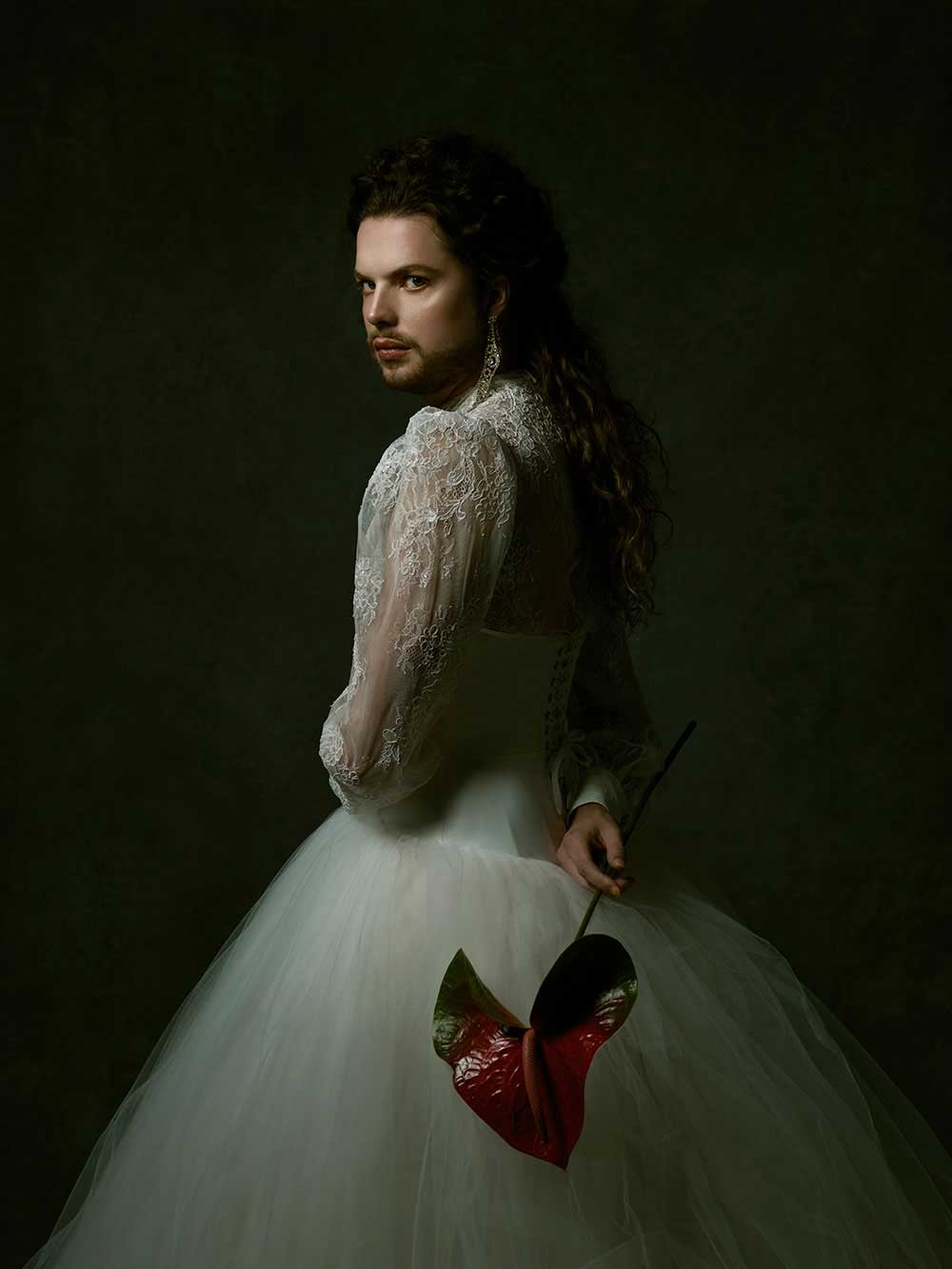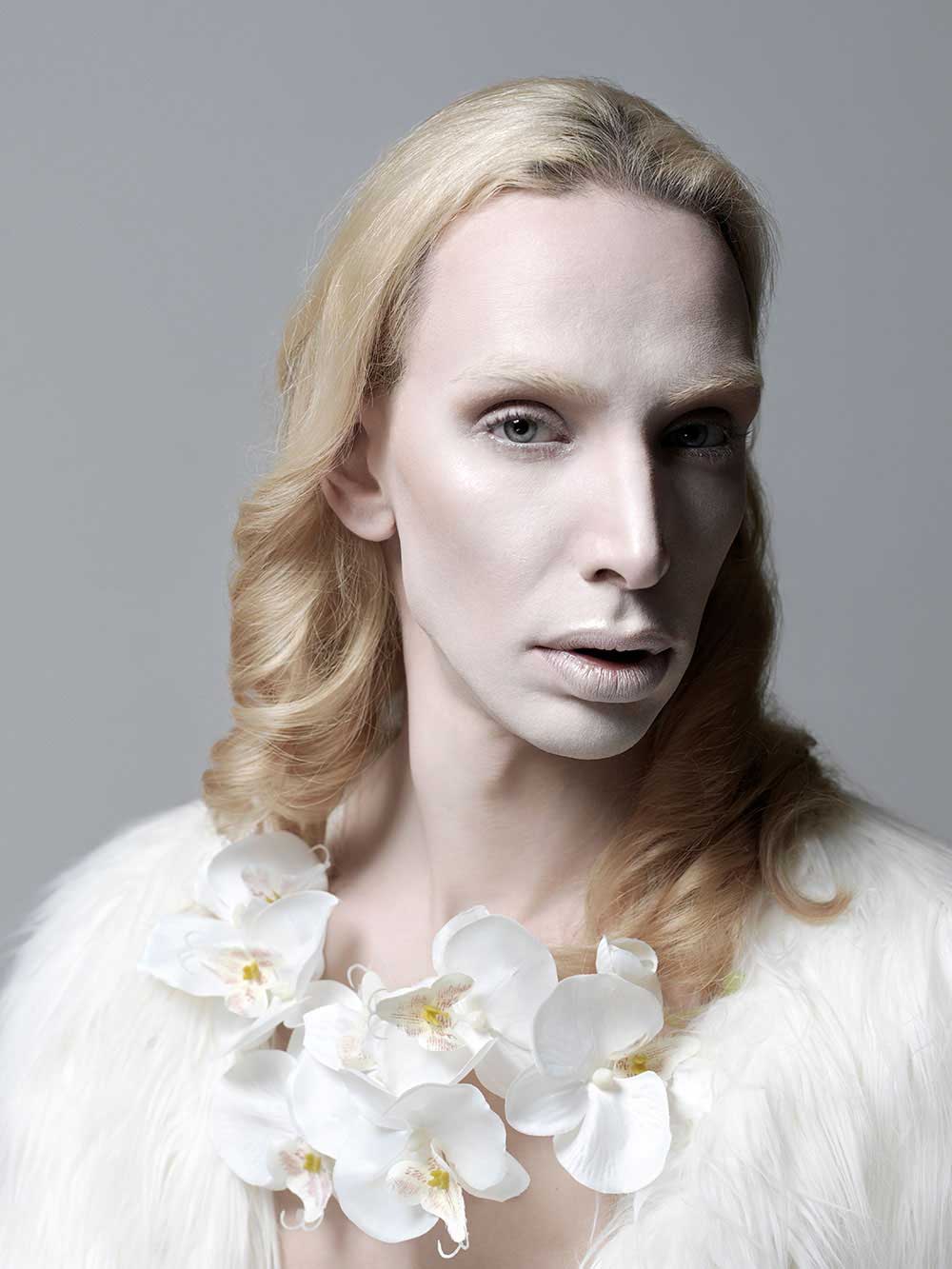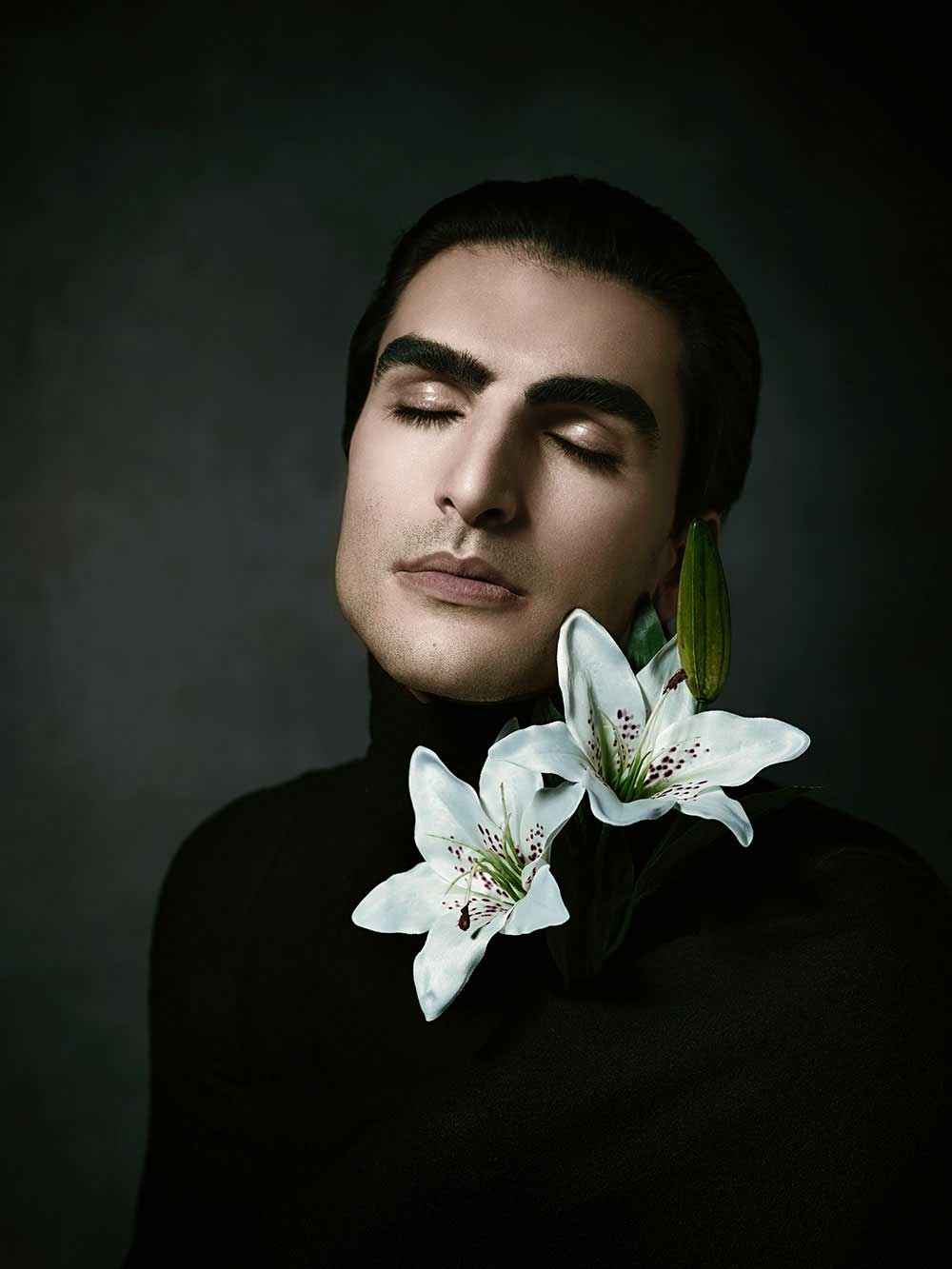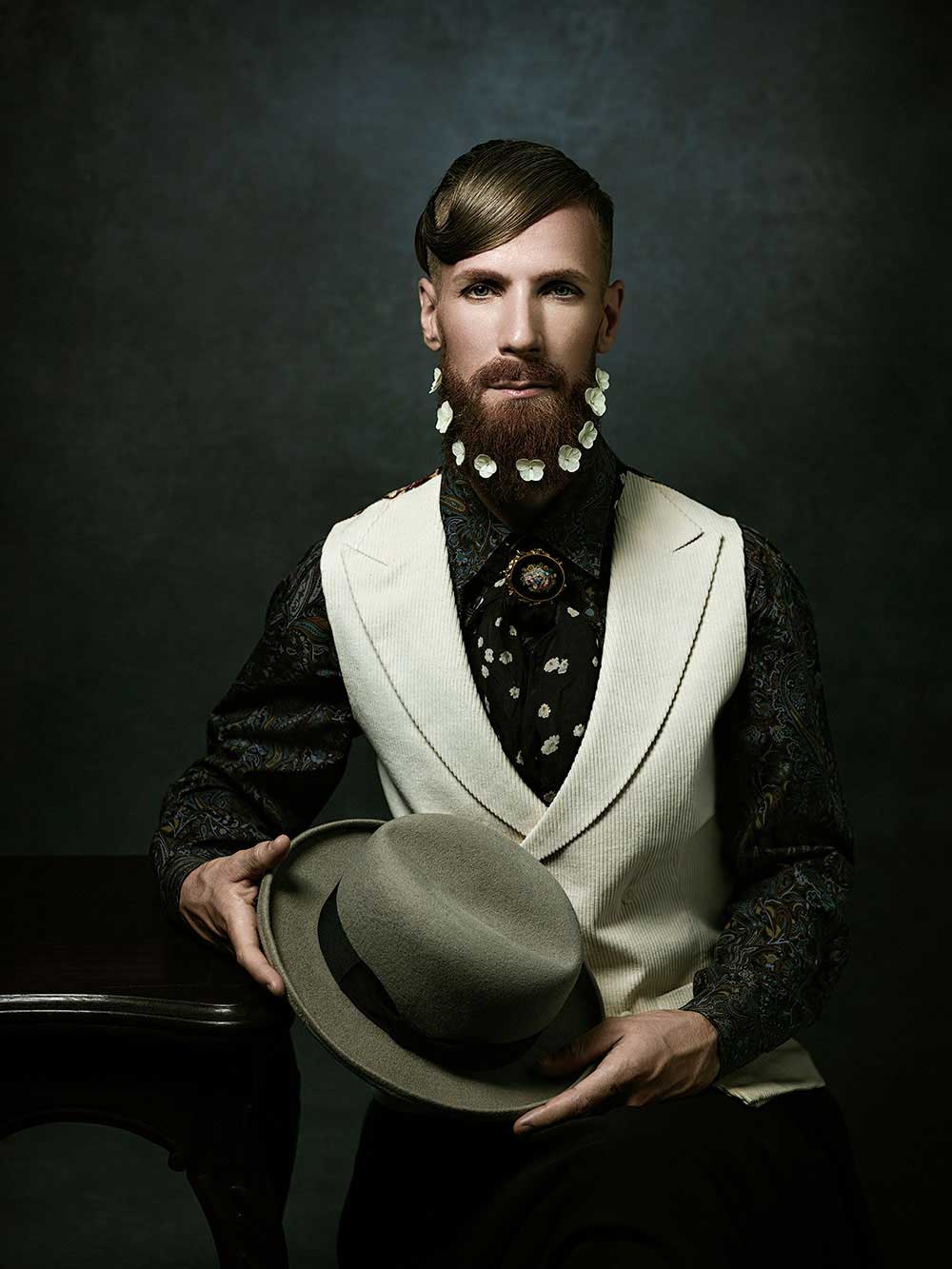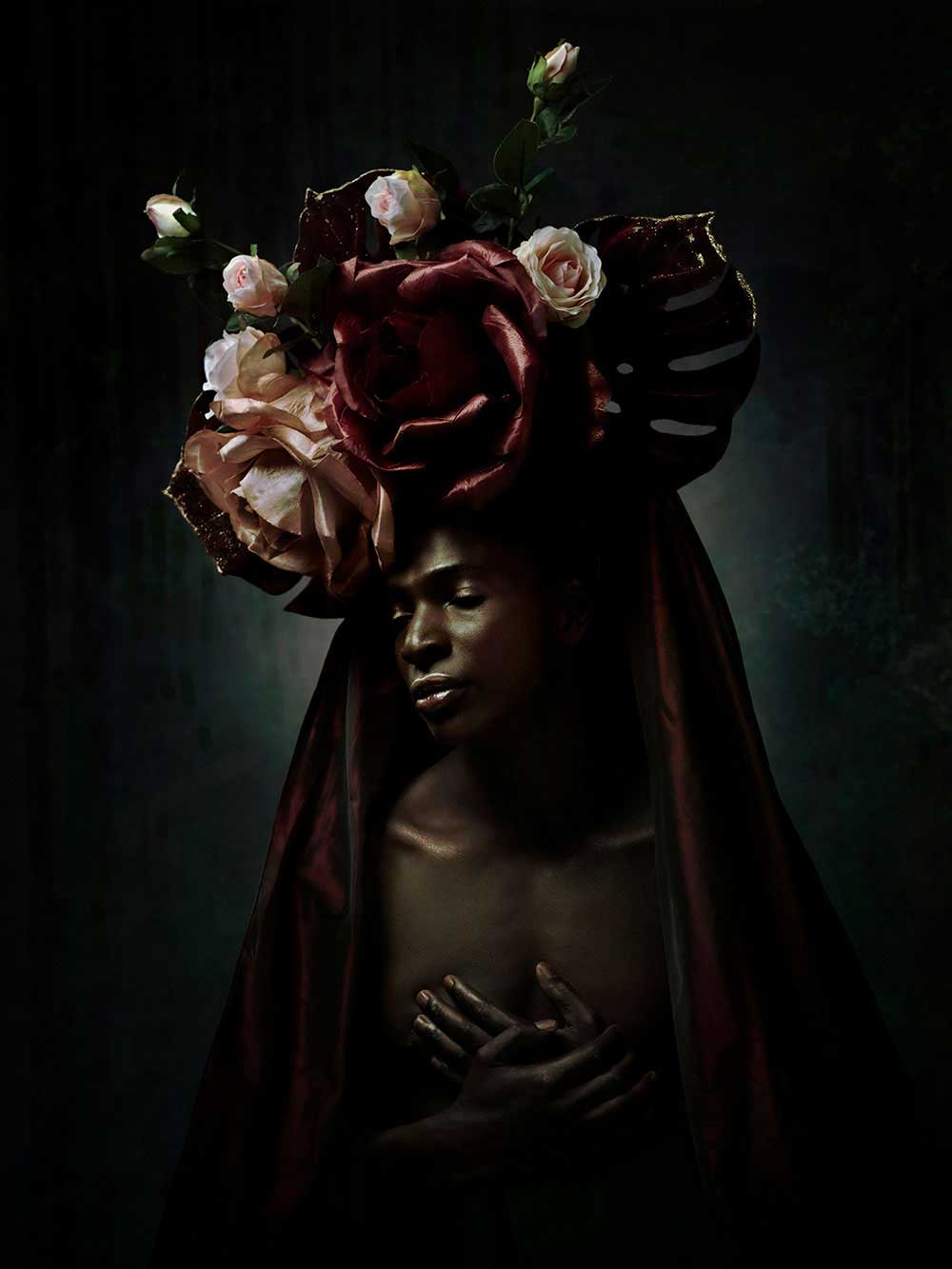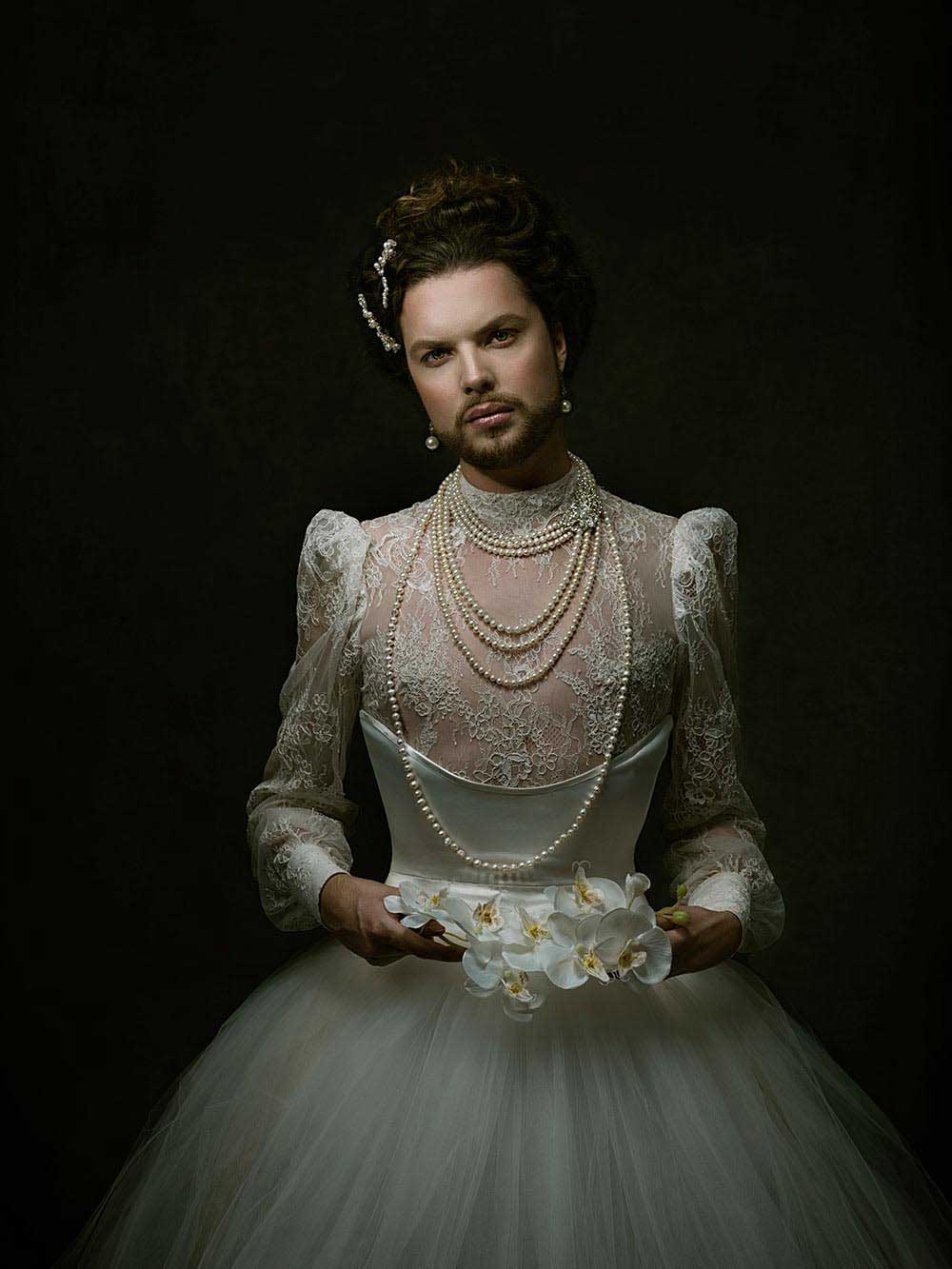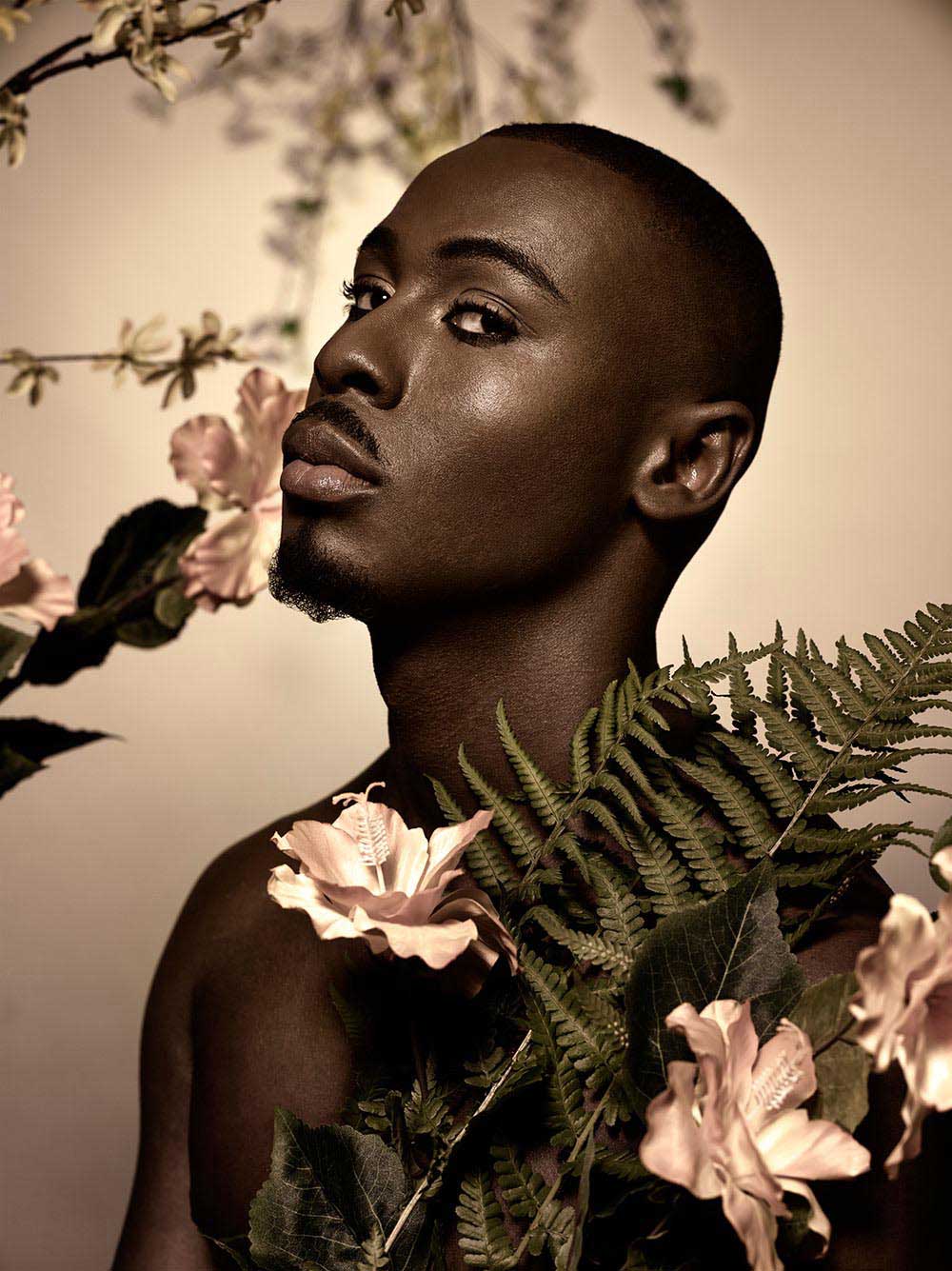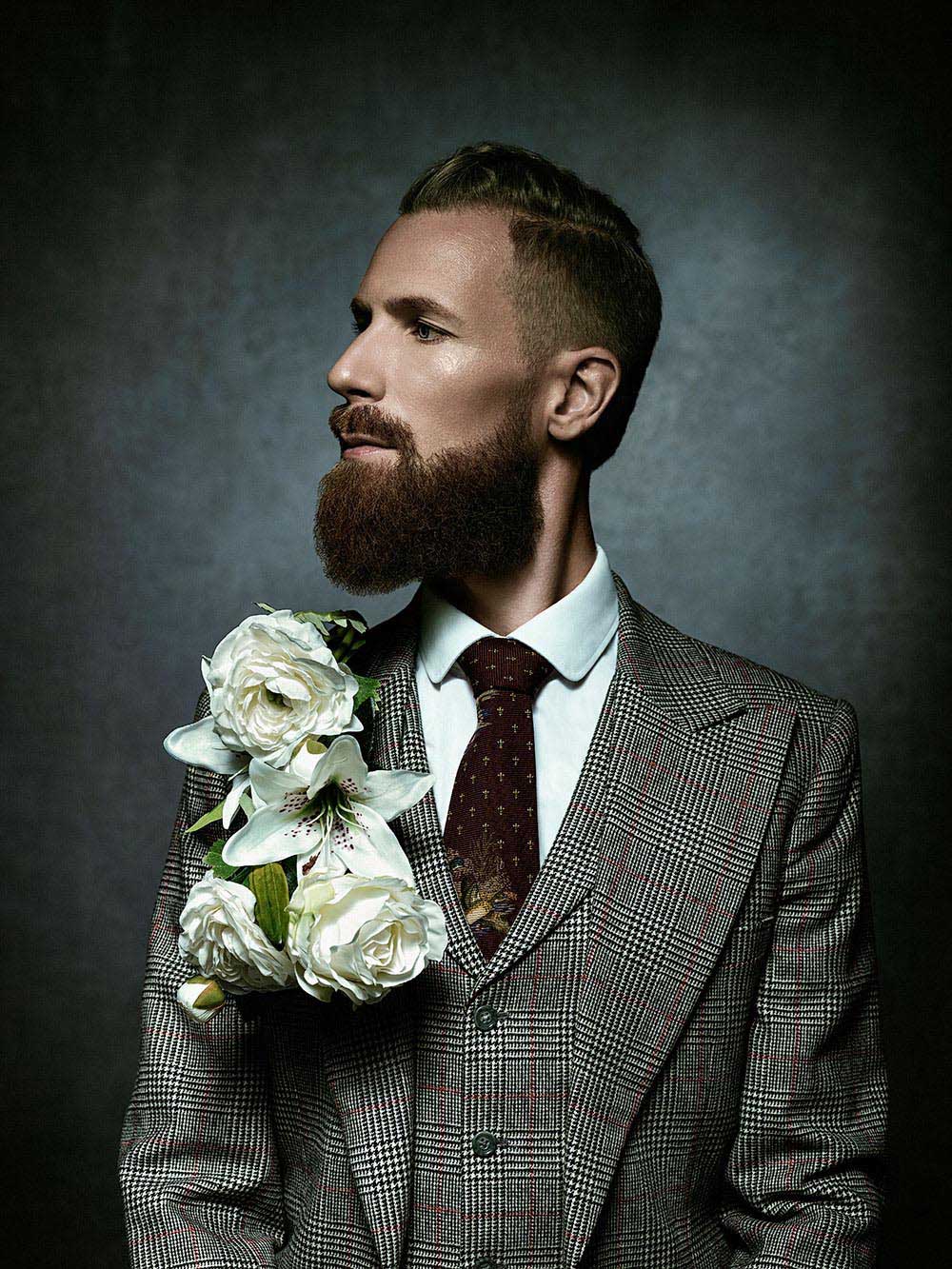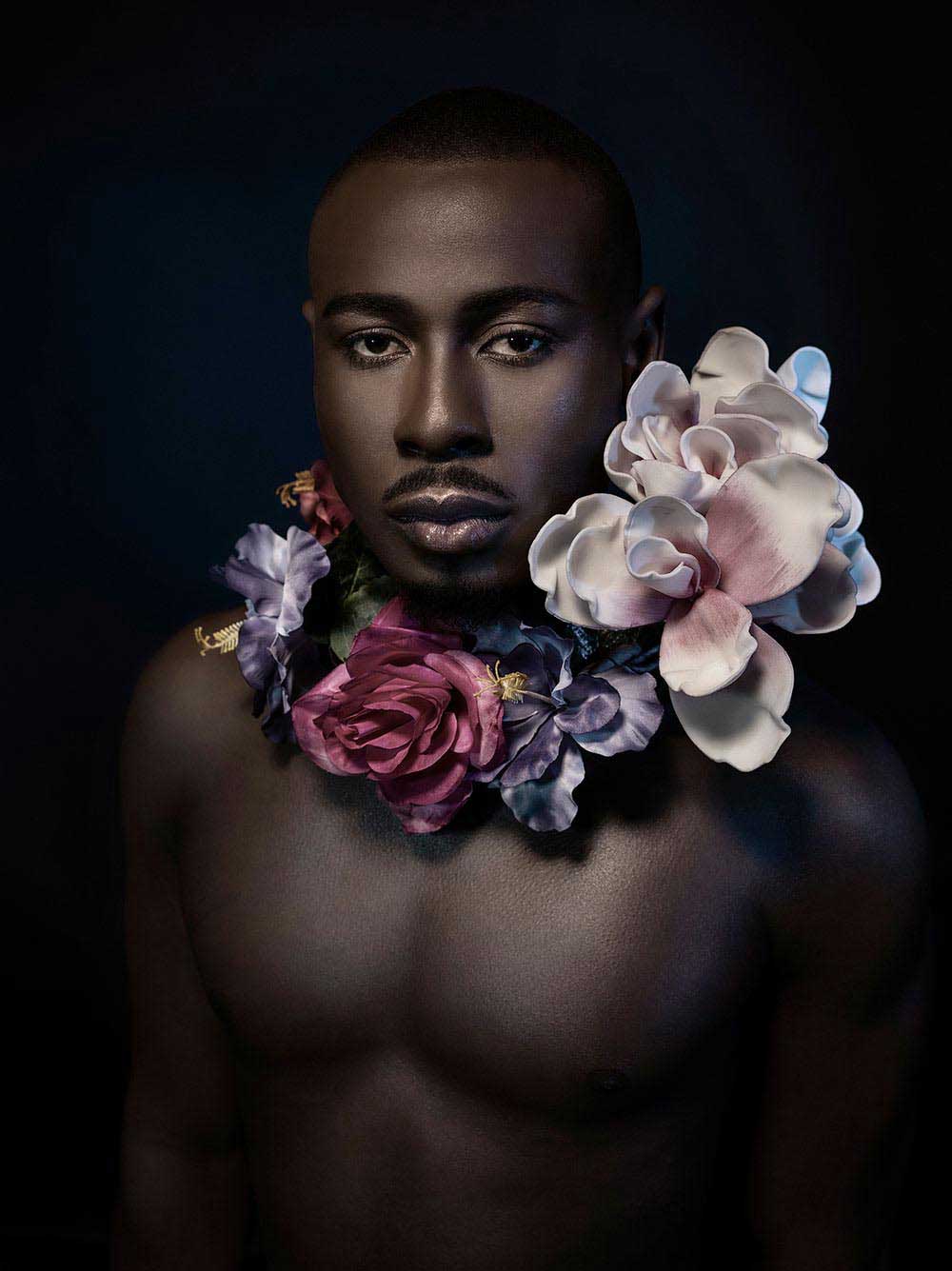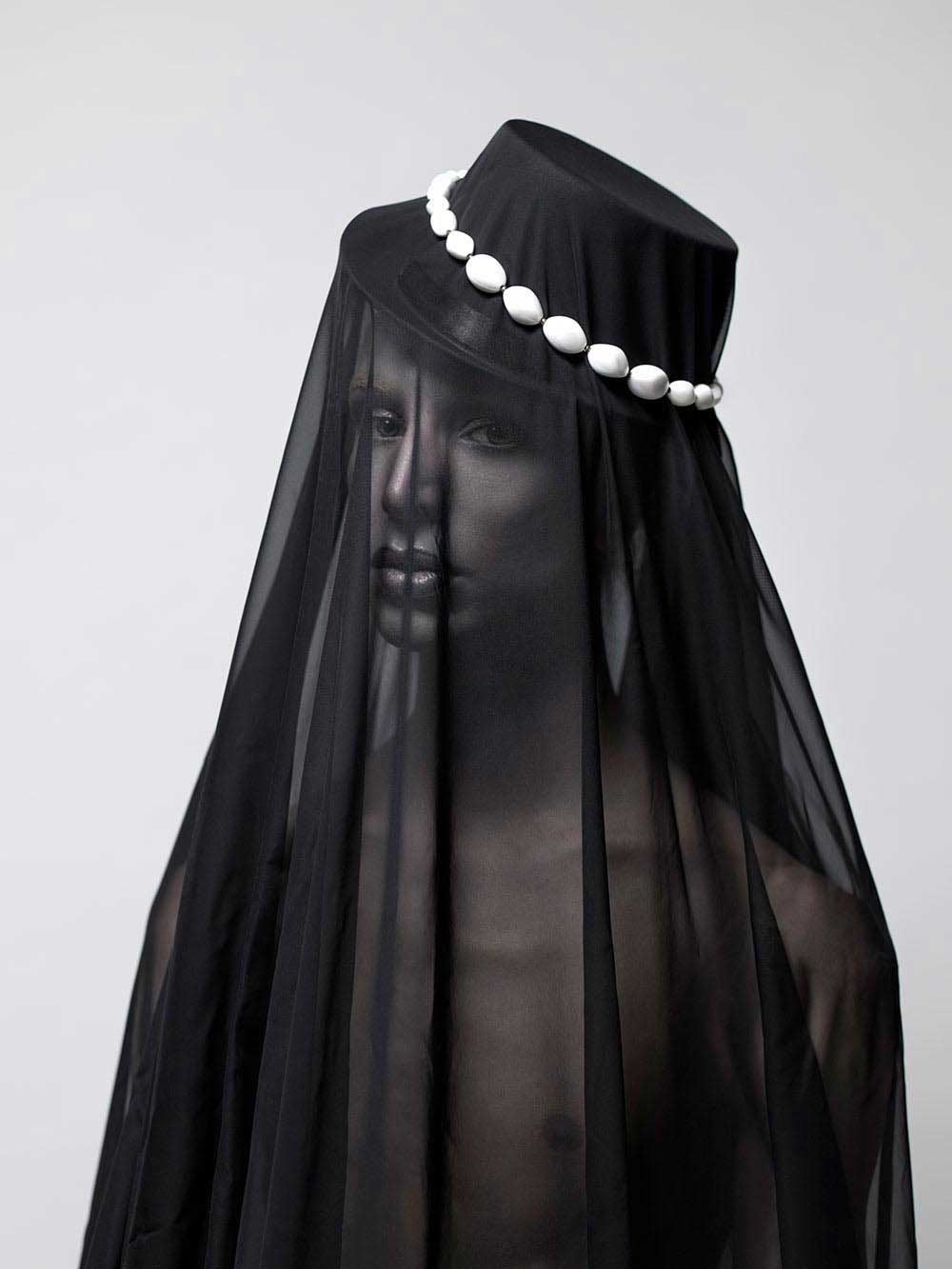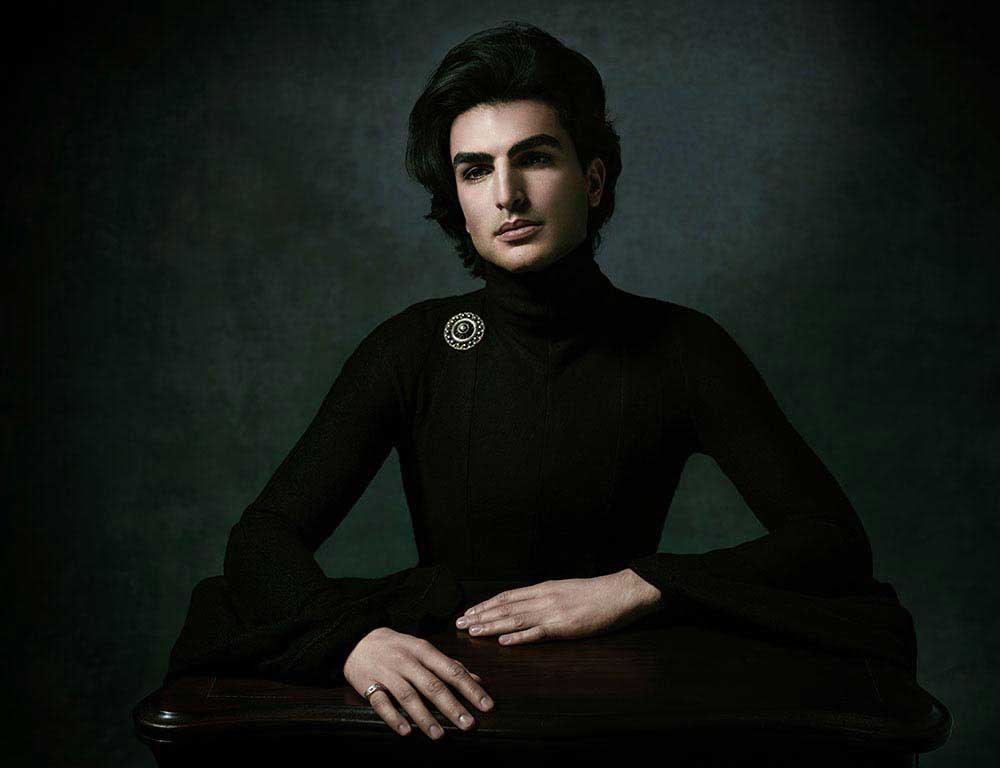This ongoing series of studio portraits of young men is intended to challenge the viewer with social constructs that are centered around masculinity and femininity. Gender bias, gender roles and stereotypes can affect everyone negatively. In our society the normative narrative of “male” is tough and assertive and “female” equals tender and weak.
Manhood needs to be proven continuously and can be lost. Research demonstrates that men too face backlash if they don’t adhere to masculine gender stereotypes. Showing vulnerability, displaying empathy, expressing sadness and acting nicer can lead to lower status, less income and potential career derailment. With my “female gaze” I only see beautiful people, who can dress, think or act in a traditionally feminine manner and still be anything they want. There is no correlation between expressing femininity and someone’s competence.
When I was a resident in dermatology it struck me that so many people apparently led double lives. Seemingly ordinary men and women hid secrets from those closest to them: their families, friends and co-workers. They kept their sexual orientation or the abuse a secret and were caught in a web of lies, risks and shame. Ever since I’ve been fascinated by the duality of what we present to others and what we keep hidden.
It hurts me to see that so many people have to live under the yoke of racism, homophobia, and misogyny and will inevitably have to face an immense amount of discrimination in our society. When people are chronically treated differently, unfairly or badly, it can have effects ranging from low self-esteem to a higher risk for developing stress-related disorders such as anxiety and depression. This marginalization causes grief and anguish. Yet not being able or allowed to talk about these experiences has consequences for one’s self-image and self-esteem. It is difficult to accept yourself and develop a positive self-image when society looks down on you because of your sexual orientation or gender identity, your skin color or because you are a victim of sexual abuse.
With my images I both hope to arouse the viewer’s curiosity about the other and create awareness of the presence of suppressed grief and anguish. On the surface there is this seductive beauty, hidden underneath this however is a deeper layer, a photographic study of an inner life, of human emotions. It is an invitation to take a step back, zoom out and see life from a higher vantage point than your own, without prejudice. If we are able to change our value judgments, I strongly believe it will reduce the seemingly insurmountable differences between people and races. For me it is not about being idealistic, but about being hopeful.
“And what really matters –quoting Henri David Thoreau– is not what you look at, but what you see.”
Hopefully my work also offers solace to viewers who might experience my imagery as something close to life as they know it.
About Renata Dutrée
Renata Dutrée is a Dutch Fine Art photographer and former dermatologist, who creates classical Fine Art portraits and Still lifes. She is inspired by the great artists in painting and sculpture of the previous centuries, especially the Greek and Roman period, the Renaissance and the Golden Age. In the period following her graduation from the Photo Academy in Amsterdam (December 2019), she created series with a strong personal signature. She has won numerous international awards with her inclusive and intimate photographs (e.g. Lensculture, LifeFramer, 17th Julia Margaret Cameron Award) and her artworks were exhibited internationally.
Dutrée uses light with references to symbolism, religion, art, and history. In her artworks she intertwines personal stories and emotions of the models with past experiences as a medical doctor. She explores ways to portray humanity in a different way, by giving space to expressing an inner life, one that is kept hidden and giving it significance and legitimacy.
“ I’m fascinated by the deeply hidden pain of traumas in our minds and hope to reveal something about their existence via my photography. The recurring themes in my work deal with hiding and/or revealing and the feminine versus the masculine. Duality is key, dark versus light, exterior versus inside, strength versus vulnerability, past versus present, wanting to be seen versus not daring to show yourself. My work evolves around this yin and yang balance of life and I think my photography helps me to express myself on a deep emotional level.”
By creating aesthetically pleasing compositions and powerful, yet somewhat mysterious imagery, she can connect a dark and sometimes disturbing past to the present with subtlety and great sensitivity. The narrative often gently unfolds in the expressions of the subjects or in their postures. There are things unrevealed, stirring underneath the surface and giving the viewer a glimpse of the darkness within, evoking feelings of longing, escape and might-have-beens. [Official Website]



